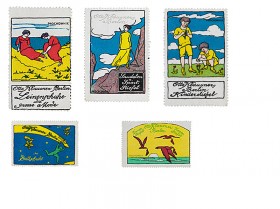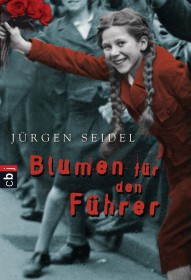Innumerable publications have appeared on the market about the Nazi period in Germany, as well as a steady stream of new novels, non-fiction, and books for children or young adults that deal with this subject. Among them you will find Jürgen Seidel’s “Flowers for the Führer,” the first part of a trilogy that is, according to the reviews, “a very complex, moving, and exciting novel for young adults about a tragic love story during the era of National Socialism,” and is also “worth reading for adults.” Some of us read the trilogy as part of a reading group dedicated to keeping abreast of children’s and young adult literature about Nazism. And we quickly discovered that instead of discussing the depiction of the Nazi regime and German history, we needed to talk about something else: racism.
→ continue reading
Coal-black language
Leo Prochownik

Five stamp-sized advertisements for the company Otto Klausner GmbH, Berlin, ca. 1910-1914. Gift of Peter-Hannes Lehmann
Like every museum, we have some objects in our collection that are always on display for our visitors, some that we show from time to time in temporary exhibitions, and also some that we rarely show because they are more suited to research purposes. And then there are objects that we should have put on view long ago but they are still sitting, out of sight, in our warehouse. It affords a particular pleasure when such items finally get processed for our online database and put on display.
A collection that falls into this category is a set of graphics by Leo Prochownik (1875 – 1936) → continue reading
From the ceramic jug to the Pineapple Goblet: Working with archival items
It’s cold. The neon light casts a harsh glare. A gray cabinet stands next to another along white walls. The room feels sterile. The air conditioning hums. A gloomy place.
I put on blue, latex gloves, open one of the cabinets and take out a gray carton. Contours of an item shimmer from under layers of tissue paper. Carefully, I take the object out of the carton and free it from the paper; a microcosm of history presents itself, as if this gloomy place accentuates the aura of the item, the room itself taking a whole step back. → continue reading

